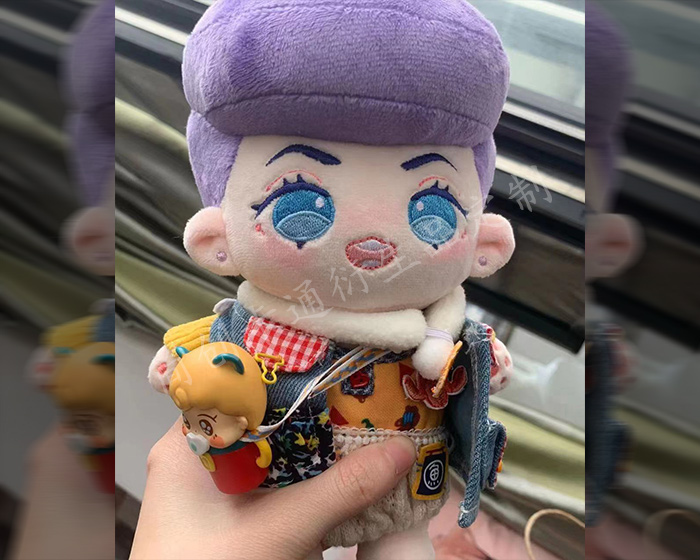Cleaning moldy stuffed animals requires careful attention to prevent further damage and ensure the toy is safe for use. Mold can develop in plush toys due to moisture, humidity, or improper storage, making it essential to address the issue promptly and effectively. Here’s a step-by-step guide on how to clean moldy stuffed animals safely.
Step 1: Assess the Damage
Before you begin the cleaning process, examine the stuffed animal closely. Check for any signs of extensive mold growth, which might indicate that the toy is beyond cleaning or could pose health risks. If the mold is minimal and localized, it’s typically safe to proceed with cleaning. However, if the toy has extensive mold or is very valuable, consider consulting a professional cleaner.
Step 2: Prepare for Cleaning
Take the stuffed animal outside to prevent spreading mold spores in your home. This also helps keep your cleaning area contained. Use a soft brush, like a toothbrush, to gently brush off any loose mold on the surface. Be cautious not to press too hard, as this could push the mold deeper into the fabric.
Step 3: Create a Cleaning Solution
To effectively kill mold, mix a solution of one part white vinegar to two parts water in a spray bottle. Vinegar is a natural mold killer and is safe for most fabrics. Alternatively, you can use a mixture of mild detergent and warm water if the toy can withstand washing. Always test the solution on a small, inconspicuous area first to ensure it doesn’t discolor or damage the fabric.
Step 4: Clean the Stuffed Animal
Spray the cleaning solution onto the affected areas of the stuffed animal. Allow it to sit for about 10-15 minutes to penetrate and kill the mold. Then, use a clean cloth or sponge to gently wipe the area, working from the outside of the moldy spot inward to avoid spreading it further. For deeper cleaning, you may consider hand washing the entire toy, especially if it’s machine washable.
Step 5: Rinse and Dry
If you’ve used a detergent solution, rinse the stuffed animal with clean water to remove any soap residue. Ensure you do not soak the toy, especially if it contains stuffing that can absorb water. After rinsing, gently squeeze out excess water and lay the toy flat on a clean towel. Reshape it and allow it to air dry completely in a well-ventilated area, avoiding direct sunlight which can fade colors and damage certain materials.
Step 6: Prevent Future Mold Growth
To prevent mold from returning, ensure that the stuffed animal is kept in a dry environment. Store it in a well-ventilated area, and avoid places with high humidity, such as basements or damp closets. Regularly check for any signs of moisture and clean the toy periodically to maintain its condition.
Conclusion
Cleaning moldy stuffed animals is manageable with the right approach. By following these steps, you can effectively remove mold while keeping the toy safe for continued use. If the mold issue is severe or persistent, it might be best to seek professional help to ensure thorough cleaning and preservation of the cherished toy.
The following are some examples of plush toys that our factory customizes for customers. Check out if there is one that you like best.
-
Custom Animal Plush
-
Cute Plush Doll
-
Custom Stuffed Animals
-
Plush Toy
-
Plush Dolls
-
Custom Stuffed Dolls
-
Custom Plush Toy
-
Cotton Dolls
-
Weighted Plush Toys
-
Cute Stuffed Animals
-
Custom Pet Stuffed Animal
-
Warmies Stuffed Animals
-
Weighted Stuffed Animal
-
Soft Toys
-
Plush Stuffed Doll
-
Custom Stuffed Dolls
-
Plush Maker
-
Bear Stuffed Toy
-
Anime Plush
-
Custom Stuffed Animal
-
Anime Plush
-
Custom Plush Toy
-
Personalised Stuffed Animal
-
Plush Animal Toys
-
Custom Plush Makers
-
Custom Plushies
-
Toy Manufacturer
-
Rag Doll Making
-
Custom Toys
-
Dog Plush Toys
-
Custom Rag Doll
-
Stuffed Animals
-
Custom Plush
-
Custom Plush Dolls
-
20cm Cotton Doll
-
Jojo Plush
-
Custom Doll
-
Jojo Doll
-
Large Plush Toys
-
15cm Cotton Doll
-
Dumpling Plush
-
Cotton Doll


























